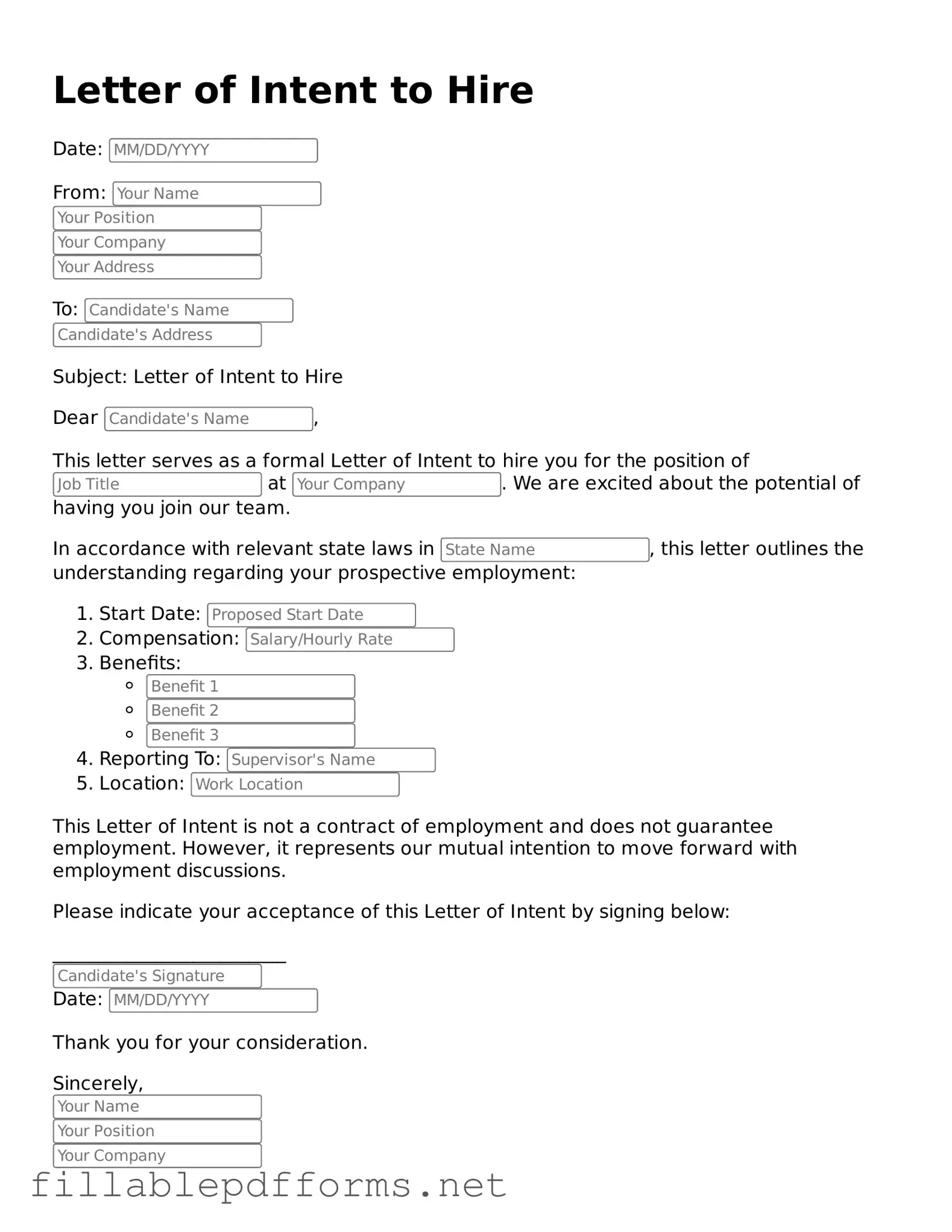- Misconception 1: A Letter of Intent to Hire is a legally binding contract.
Many people believe that this letter creates a legal obligation for the employer to hire the candidate. In reality, it is usually a preliminary document that outlines intent but does not guarantee employment.
- Misconception 2: The Letter of Intent to Hire guarantees a specific start date.
Some assume that once they receive this letter, they will start work on a certain date. However, the start date can change based on various factors, including background checks or other hiring processes.
- Misconception 3: This letter is only for full-time positions.
People often think that Letters of Intent to Hire apply only to full-time roles. In fact, they can also be used for part-time, temporary, or contract positions.
- Misconception 4: A Letter of Intent to Hire means the candidate is the only one being considered.
Some candidates may feel that receiving this letter means they are the sole focus of the hiring process. Employers may still be considering other applicants until a final decision is made.
- Misconception 5: The letter includes details about salary and benefits.
Many expect to see salary information and benefits outlined in the letter. However, this document typically does not provide those specifics, which are usually discussed later in the hiring process.
- Misconception 6: The Letter of Intent to Hire is the final step in the hiring process.
Some candidates believe that receiving this letter means they have secured the job. It is often just one step in a longer hiring process that may include interviews and negotiations.
- Misconception 7: A Letter of Intent to Hire is the same as an offer letter.
People often confuse these two documents. An offer letter is a formal job offer that includes terms of employment, while a Letter of Intent to Hire expresses interest without finalizing any terms.
- Misconception 8: The letter can be rescinded without consequences.
Some candidates think that an employer can simply withdraw the letter without any repercussions. In some cases, if a candidate relies on this letter and incurs costs, there may be grounds for a claim.
- Misconception 9: The Letter of Intent to Hire is a standard form with no variations.
Many assume that all Letters of Intent to Hire are the same. In reality, each employer may have different formats and wording that reflect their specific needs and practices.
- Misconception 10: Receiving a Letter of Intent to Hire means the candidate should stop looking for other jobs.
Some candidates may feel secure and stop their job search upon receiving this letter. However, it is wise to continue exploring other opportunities until a formal offer is accepted.
